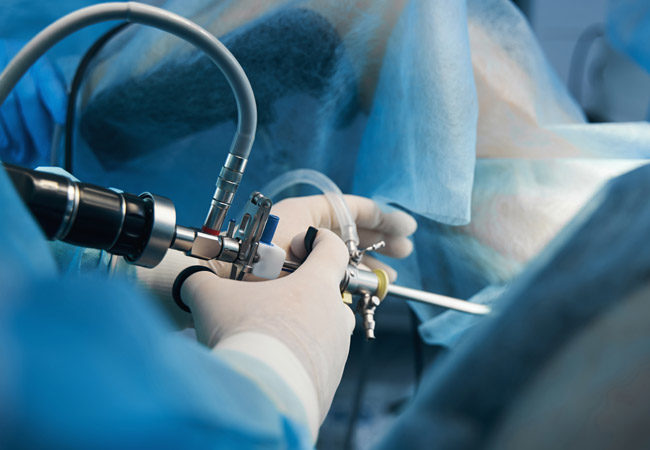Hysteroscopic Surgeon in Nagpur

Hysteroscopic Surgeon
Hysteroscopy is primarily used to diagnose and treat the causes of abnormal uterine bleeding. The procedure allows your surgeon to look inside of your uterus with a tool called a hysteroscope.
A hysteroscope is a thin, lighted tube that a surgeon inserts through your vagina to examine your cervix and the inside of your uterus.Hysteroscopy can be a part of the diagnostic process, as well as the treatment process.
Hysteroscopy is a procedure that allows a surgeon to look inside of your uterus in order to diagnose and treat the causes of abnormal bleeding. Hysteroscopy is done using a hysteroscope, a thin, lighted tube that’s inserted into your vagina to examine your cervix and the inside of your uterus. An operative hysteroscopy can be used to remove polyps, fibroids and adhesions.
What are the risks for a hysteroscopy?
Some possible complications of hysteroscopy may include:
- Infection
- Bleeding
- Pelvic inflammatory disease
- Tearing of the uterus (rare) or damage to the cervix
- Complications from fluid or gas used to expand the uterus
What happens during a hysteroscopy?
Your provider may do a hysteroscopy an outpatient basis or during a hospital stay. Procedures may vary based on your condition and your healthcare provider’s practices.
Generally, a hysteroscopy follows this process:
- You will remove your clothing and put on a hospital gown.
- You will empty your bladder before the procedure.
- An intravenous (IV) line may be put in your arm or hand.
- You will be positioned on an operating table, lying on your back with your feet in stirrups.
- The vaginal area will be cleaned with an antiseptic solution.
- Your provider may dilate your cervix before inserting the hysteroscope.
- Your provider will insert the hysteroscope into the vagina, through the cervix, and into the uterus.
- Your provider will inject a liquid or gas through the hysteroscope to expand the uterus for a better view.
- Your provider will examine the wall of the uterus for problems. He or she may take photographs or videos and take tissue samples (biopsies).
- If you need a procedure, such as fibroid removal, your provider will insert tools through the hysteroscope.
- For more complex procedures, your provider may insert another type of scope through the belly (laparoscope) to view the outside of the uterus at the same time.
- When the procedure is done, your provider will remove the hysteroscope.
What are the benefits of hysteroscopy?
How safe is hysteroscopy?
Hysteroscopy is considered a safe procedure. As with any surgery, complications can occur. With hysteroscopy, complications occur in less than 1% of cases and can include:
- Infection.
- Heavy bleeding.
- Intrauterine scarring.
- Reaction to the anesthesia.
- Injury to your cervix, uterus, bowel or bladder.
- Reaction to the substance used to expand your uterus.

